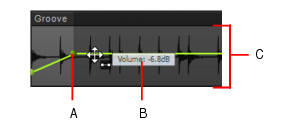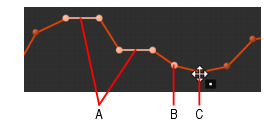To edit automation envelopes, first select the automation parameter from a track’s Edit Filter control (see Selecting the data type to edit), and use the global tools in the Control Bar’s Tools module (see Tools) to edit the envelope.Figure 350. Edit Filter control.To control track automation, click a track’s Edit Filter control, point to Track Automation and choose the desired track parameter on the submenu menu. To control clip automation, point to Clip Automation and choose the desired clip parameter on the submenu. The Edit Filter menu uses bold text to indicate already created envelopes. For more information about using the Edit Filter, see Selecting the data type to edit.












Tip - Searching Documentation
Tip: To search for a specific topic, type your search query in the Search Cakewalk.com field at the top right of this page.
When the search results appear, click which product's documentation you would like to search to filter the search results further.
Note - Using Offline Help
Note: If you prefer to always use offline Help, go to Edit > Preferences > File > Advanced in your Cakewalk software and select Always Use Offline Help.
If you are not connected to the internet, your Cakewalk software will default to showing offline help until an internet connection becomes available.







